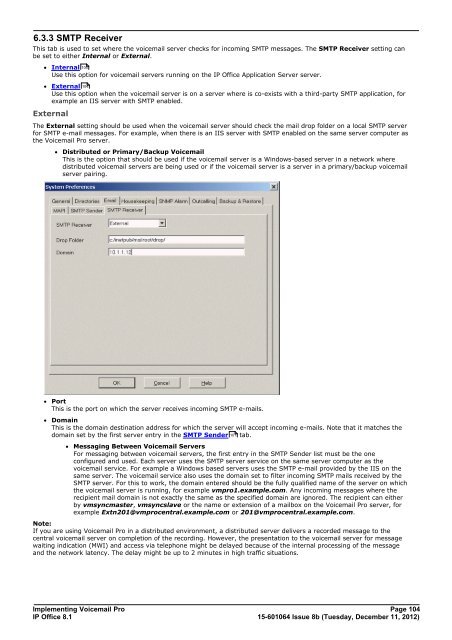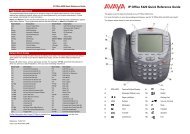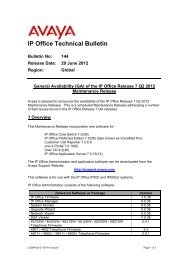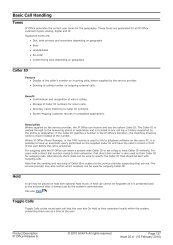Voicemail Pro installation - IP Office Info
Voicemail Pro installation - IP Office Info
Voicemail Pro installation - IP Office Info
You also want an ePaper? Increase the reach of your titles
YUMPU automatically turns print PDFs into web optimized ePapers that Google loves.
6.3.3 SMTP Receiver<br />
This tab is used to set where the voicemail server checks for incoming SMTP messages. The SMTP Receiver setting can<br />
be set to either Internal or External.<br />
· Internal 104<br />
Use this option for voicemail servers running on the <strong>IP</strong> <strong>Office</strong> Application Server server.<br />
· External 104<br />
Use this option when the voicemail server is on a server where is co-exists with a third-party SMTP application, for<br />
example an IIS server with SMTP enabled.<br />
External<br />
The External setting should be used when the voicemail server should check the mail drop folder on a local SMTP server<br />
for SMTP e-mail messages. For example, when there is an IIS server with SMTP enabled on the same server computer as<br />
the <strong>Voicemail</strong> <strong>Pro</strong> server.<br />
· Distributed or Primary/Backup <strong>Voicemail</strong><br />
This is the option that should be used if the voicemail server is a Windows-based server in a network where<br />
distributed voicemail servers are being used or if the voicemail server is a server in a primary/backup voicemail<br />
server pairing.<br />
· Port<br />
This is the port on which the server receives incoming SMTP e-mails.<br />
· Domain<br />
This is the domain destination address for which the server will accept incoming e-mails. Note that it matches the<br />
domain set by the first server entry in the SMTP Sender 101<br />
tab.<br />
· Messaging Between <strong>Voicemail</strong> Servers<br />
For messaging between voicemail servers, the first entry in the SMTP Sender list must be the one<br />
configured and used. Each server uses the SMTP server service on the same server computer as the<br />
voicemail service. For example a Windows based servers uses the SMTP e-mail provided by the IIS on the<br />
same server. The voicemail service also uses the domain set to filter incoming SMTP mails received by the<br />
SMTP server. For this to work, the domain entered should be the fully qualified name of the server on which<br />
the voicemail server is running, for example vmpro1.example.com. Any incoming messages where the<br />
recipient mail domain is not exactly the same as the specified domain are ignored. The recipient can either<br />
by vmsyncmaster, vmsyncslave or the name or extension of a mailbox on the <strong>Voicemail</strong> <strong>Pro</strong> server, for<br />
example Extn201@vmprocentral.example.com or 201@vmprocentral.example.com.<br />
Note:<br />
If you are using <strong>Voicemail</strong> <strong>Pro</strong> in a distributed environment, a distributed server delivers a recorded message to the<br />
central voicemail server on completion of the recording. However, the presentation to the voicemail server for message<br />
waiting indication (MWI) and access via telephone might be delayed because of the internal processing of the message<br />
and the network latency. The delay might be up to 2 minutes in high traffic situations.<br />
Implementing <strong>Voicemail</strong> <strong>Pro</strong> Page 104<br />
<strong>IP</strong> <strong>Office</strong> 8.1<br />
15-601064 Issue 8b (Tuesday, December 11, 2012)






